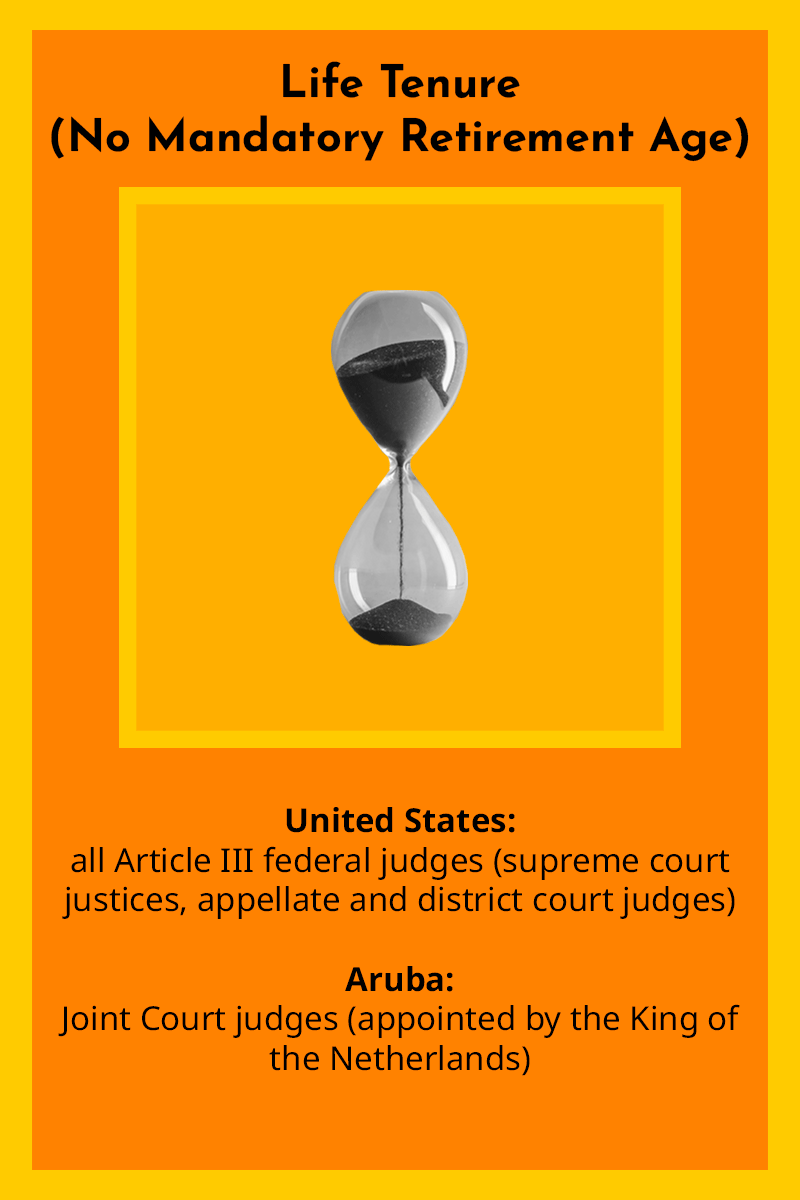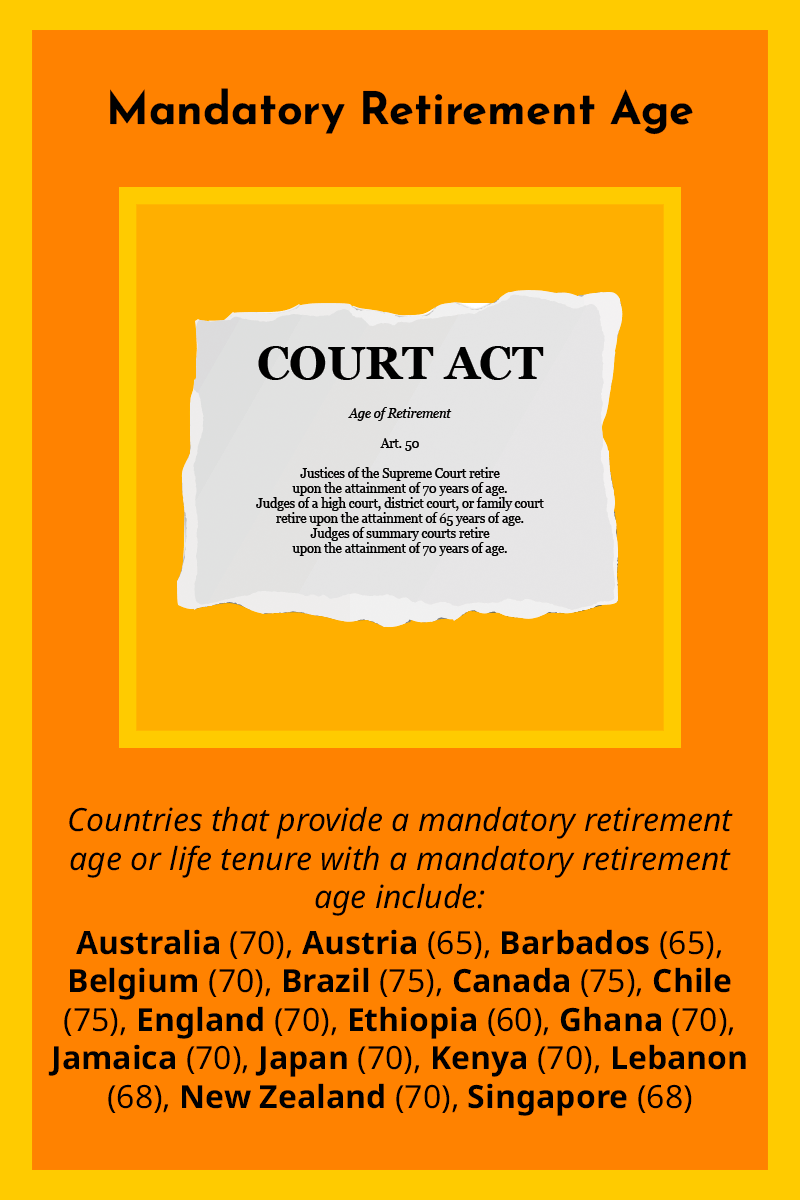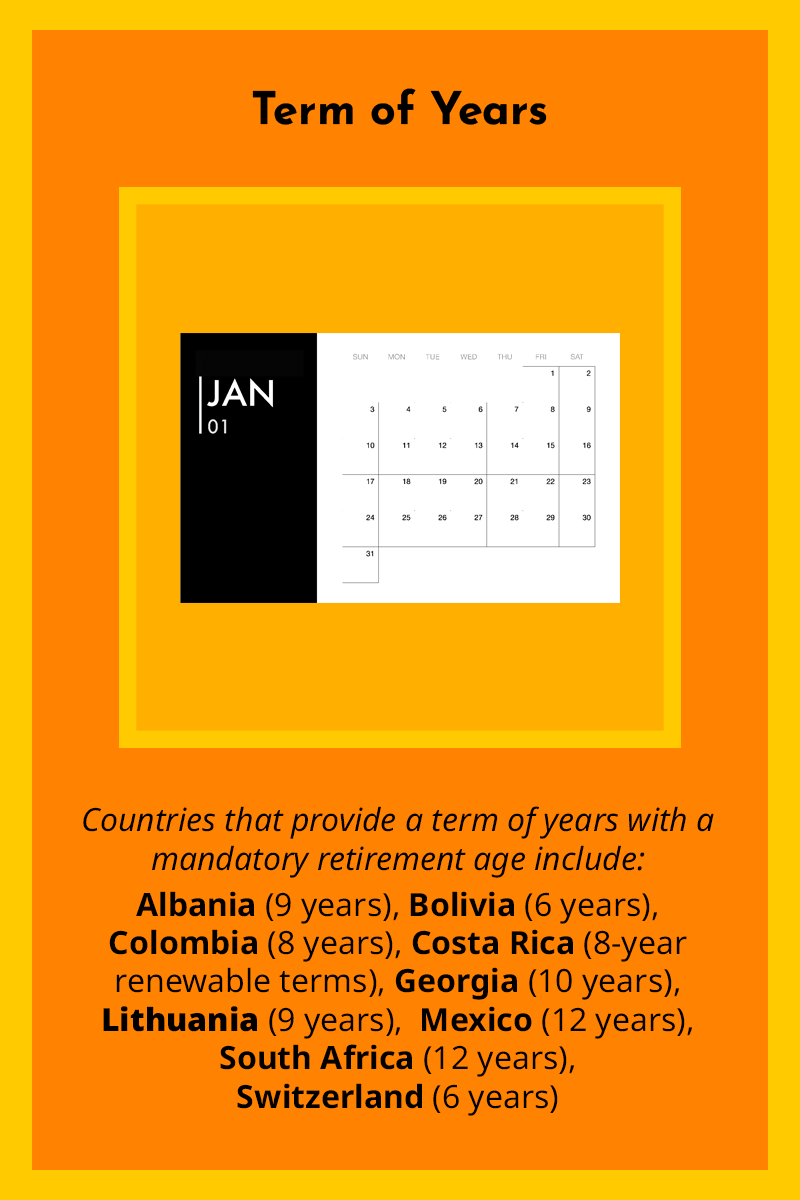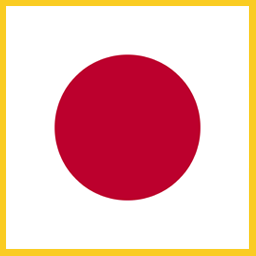Almost every country limits the tenure of judges, imposing either a mandatory retirement age or a term of years. Most countries have different tenure provisions for each level of court.
Supreme court justices may be appointed for a term of years, have a mandatory retirement age, or be given ‘life tenure’ with a mandatory retirement age. Mandatory retirement age ranges from 60 – 75 years.
Judges serving on constitutional courts usually serve a single 7 – 12-year term.
Lower court judges are usually appointed for a renewable term of years, and may also subject to a performance review and a mandatory retirement age.
A notable exception is the United States federal judiciary: the constitution accords Article III judges life tenure with no mandatory retirement age.




In Belgium, judges on the twelve-member constitutional court (half drawn from the Dutch-speaking group and half from the French-speaking group) are appointed ‘for life,’ but they must retire when they turn 70.

In New Zealand, all judges are required to retire at the age of 70. Retired judges under 75, however, can be appointed as acting judges in certain proceedings. For example, a retired justice of the Supreme Court of New Zealand can be appointed as an acting justice when the supreme or a high court cannot reach quorum due to conflict of interest, retirement, or other circumstances.

Australia eliminated life tenure for federal judges in a 1977 constitutional referendum.

In Japan, justices are appointed to the supreme court by the executive branch, typically after they turn 60. Once appointed, they are subject to retention election in the first retention election held after their appointment. Retention elections are held every ten years. Justices can be dismissed if a majority votes against them. Japan also has a mandatory retirement age of 70.

In Bolivia, judges of the highest courts must be nominated by the legislature and then elected by popular vote. They serve six-year terms and are not eligible for reelection.

In the United States, state court judges usually have renewable fixed terms or a mandatory retirement age.

In India, the mandatory retirement age for high court judges is 62 years and for supreme court justices it is 65 years.
